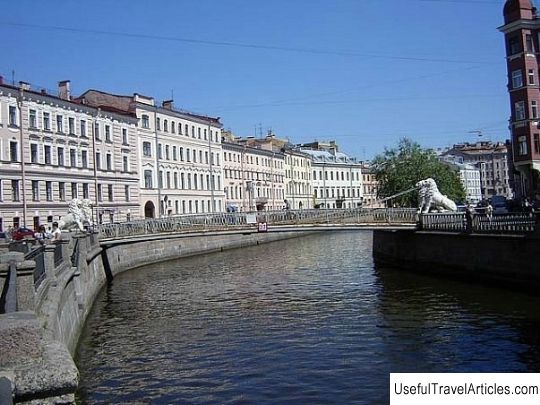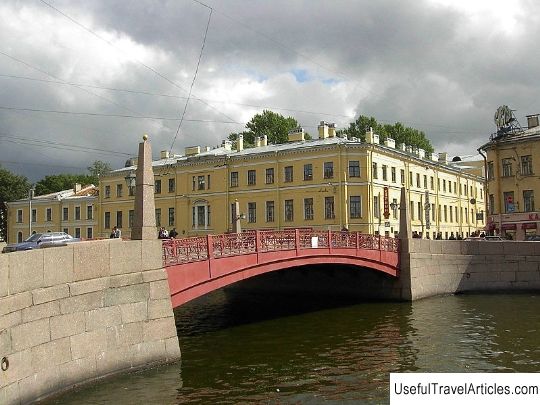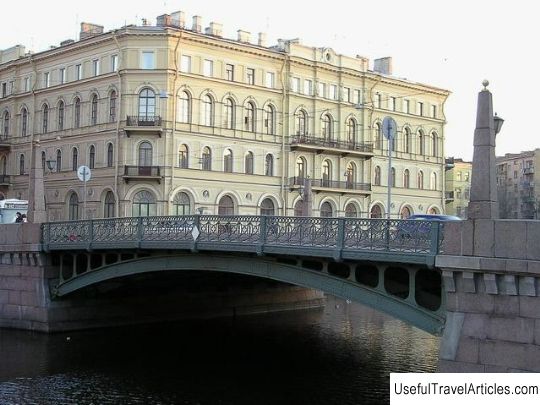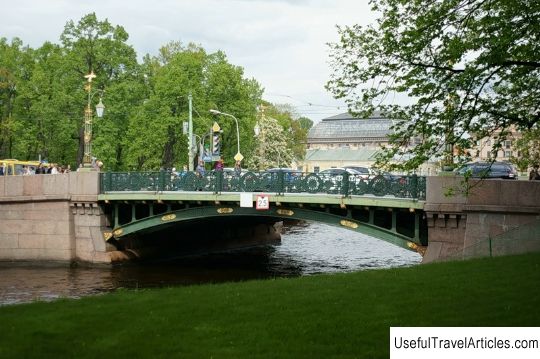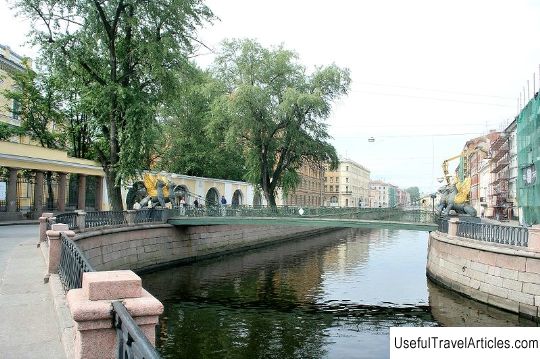Stone bridge description and photo - Russia - Saint Petersburg: Saint Petersburg
Rating: 8,2/10 (388 votes) 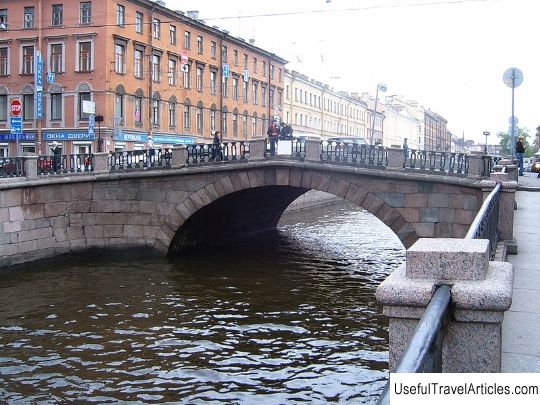
Kamenny Most description and photo - Russia - Saint Petersburg: Saint Petersburg. Detailed information about the attraction. Description, photos and a map showing the nearest significant objects. Photo and descriptionThe Kamenny Bridge today is one of the oldest buildings in St. Petersburg, practically not subjected to cardinal reconstruction. The bridge is a valuable architectural monument of the 18th century protected by the state. Geographically, it is located on the Griboyedov Canal (crosses it along the axis of Gorokhovaya Street), connects the Spassky and Kazansky Islands, and is also the border between the Central and Admiralty districts of St. Petersburg. By its construction type, Kamenny is a single-span arched bridge; by area of application - pedestrian and automobile. The bridge is small in size: it is 13.88 m wide and 19 m long. It should be noted that in St. Petersburg there are still several stone bridges, But the appearance of such a name is associated with two circumstances: either with the fact that this structure became the first stone bridge in the city (before that, wood was mainly used in bridge construction), or because it is in the appearance of this bridge that beauty and the originality of the masonry of that period. It is known for certain that in 1752, it was in this place that there was a wooden crossing on stilts, called the Middle Bridge (after the name of Srednyaya Perspektivnaya Street, now Gorokhovaya). In its present form, the bridge was built in 1766-1776. At the same time (in 1769), during the reconstruction period, its modern name appeared. In addition to this name, there were other options: from 1778 it was called the Catherine Stone Bridge; in 1781 - just Catherine's, but, in the end, its real name remained - Stone. The bridge was built according to the project of the engineer, Major General Vladimir Ivanovich Nazimov under the leadership of engineer I.N. Borisov. The arch of the bridge, which, according to the project, has a parabolic outline, is lined with granite, and the abutments of the bridge are made of rubble slabs (limestone). The facades of the bridge are also faced with granite. In its original form, the bridge had four semicircular staircases to the water, which, unfortunately, have not survived to our times, since they were liquidated at the end of the 19th century. The Stone Bridge is faced with smooth granite blocks alternating with tetrahedral blocks (so-called "diamond rustic"). The railing of the bridge is designed like the railing of the embankments of the Griboyedov Canal: cast iron balusters, massive granite pedestals, a metal handrail. The bridge is also notable for the fact that in 1880 it became a "participant" in a revolutionary conspiracy. It was under it that the members of the “Narodnaya Volya” society laid dynamite with the aim of assassinating the life of Emperor Alexander II. The explosion according to the plan of the "Narodnaya Volya" was supposed to bring down the bridge while the tsar's crew was following it. The stone bridge was saved by the fears of the revolutionaries: they were not sure that seven pounds of dynamite would be enough for a complete collapse. It is sad that the tsar was nevertheless killed later, and precisely on the embankment of the Griboyedov Canal. One of the remarkable facts of the history of the bridge is that for the first buses that appeared in St. Petersburg at the beginning of the 20th century, the passage through the bridge turned out to be very difficult. The reason for this was very steep climbs, which, by the way, up to this point did not cause any interference in the movement of animal-drawn vehicles. According to the information preserved about that time, passengers of buses had to get out of transport and cross the bridge on foot, and then take their places again. A unique detail of the Stone Bridge is a metal stand with its name. This is the only post that survived at the time of 1949, today taken as a model, on the basis of which other bridge posts in St. Petersburg are made.       We also recommend reading Assumption Church description and photo - Russia - Moscow region: Klin Topic: Stone bridge description and photo - Russia - Saint Petersburg: Saint Petersburg. |
